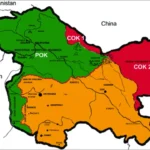Published: May 22, 2025
India is set to launch one of the world’s quickest satellite communication (satcom) rollouts, with the market expected to grow from $2.3 billion to $20 billion by 2028. This ambitious initiative aims to enhance digital connectivity across the nation, particularly in underserved and remote regions, thereby bridging the digital divide.
Strategic Policy Framework
The Indian government, through the Department of Telecommunications (DoT), has introduced comprehensive regulations to govern the satcom sector. These include:
- Local Manufacturing Mandate: Service providers are required to submit a five-year phased manufacturing plan, with at least 20% of the ground segment to be indigenously produced by Year 5 .
- Data Localization: All user data, DNS services, and control systems must be located within India, ensuring compliance with national security protocols .
- NavIC Integration: User terminals should support India’s regional navigation system, NavIC, with full implementation targeted by 2029 .
- Security Compliance: Providers must adhere to 30 specific security norms, including the capability to block websites, collect metadata, and establish local data centers .
Regulatory Approvals and Market Dynamics
The Telecom Regulatory Authority of India (TRAI) has recommended the administrative allocation of satcom spectrum at a fee of 4% of an operator’s adjusted gross revenue (AGR), valid for five years. This proposal is currently under review by the Digital Communications Commission and is expected to facilitate the commercial deployment of next-generation satellite internet services across the country .
Notably, global players such as Elon Musk’s Starlink and Jeff Bezos’ Amazon Project Kuiper are preparing to enter the Indian market. Starlink is close to obtaining the final regulatory clearance from the Indian National Space Promotion and Authorization Center (IN-SPACe) to begin its operations in India. Similarly, Project Kuiper has submitted an application to the Department of Telecommunications (DoT) for approval to operate in India .
Private Sector Participation
India’s private sector is actively contributing to the satcom ecosystem. Companies like Reliance Jio-SES and Bharti-backed OneWeb have secured GMPCS licenses and clearances from IN-SPACe to offer satellite communication services. Additionally, startups such as Dhruva Space are innovating in ground station services, providing infrastructure support essential for satellite operations .
Looking Ahead
As India accelerates its satcom rollout, the focus remains on enhancing connectivity, fostering innovation, and ensuring compliance with stringent security norms. The government’s proactive approach, coupled with private sector participation, positions India to emerge as a global leader in satellite communications, offering scalable solutions to meet the growing demand for digital services.





